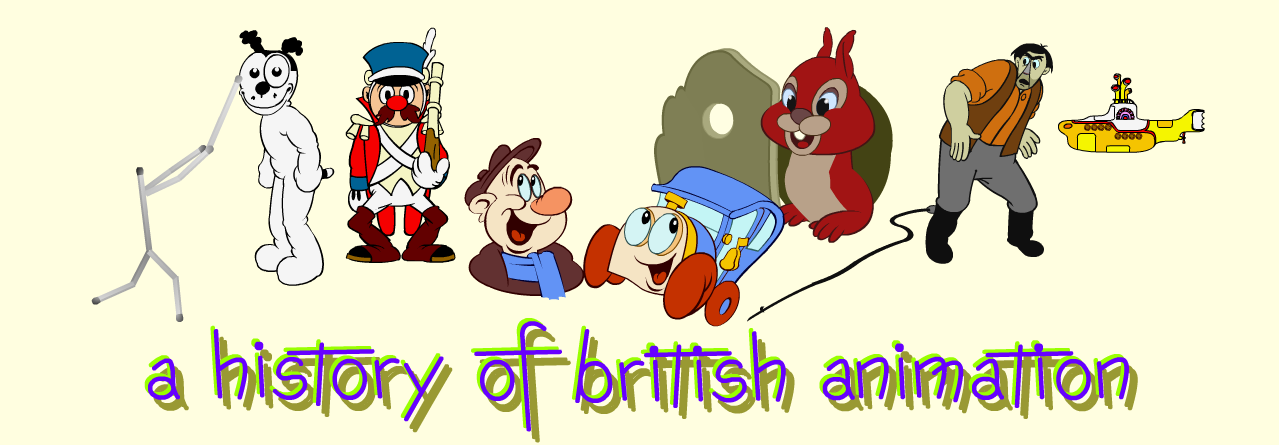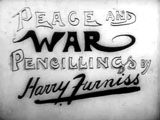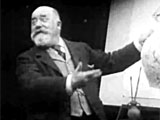

|
 | Harry Furniss(1854-1925) |  |
||
|
The illustrator, cartoonist, writer, actor and filmmaker Harry Furniss is only peripherally associated with animation: in 1910 he turned down the opportunity to make the first British drawn animation cartoon, and in 1914 he made the first series of 'Lightning Artist' war propaganda films, but was not tempted to use any animation therein. Born in Wexford, Ireland, 26 March 1854, son of an English engineer, Harry Furniss always considered himself an Englishman. In 1873, having worked as a draughtsman in Ireland, he moved to London and forged a career as a freelance artist and caricaturist. He married Mariam Rogers in 1877 and they had five children, four sons and a daughter. After becoming a regular contributor to the Illustrated London News, he worked for Punch from 1880 to 1894. Leaving Punch when it was discovered that he had sold the copyright of one of his Punch cartoons to Pears Soap for advertising purposes, he started his own humorous magazind Lika Joko - the pseudonym given him by Punch editor F C Burnand for a series of cartoons depicting English customs in the style of Japanese woodcuts. Beside his own contributions Furniss' Lika Joko contained work from the cream of humorous writers and cartoonists and was a great success. However, as Furniss' grandson relates in his book Friends and Family, the success went to his head and he was persuaded to take over the prestigious magazine The Pall Mall Budget merging it with Lika Joko as The New Budget only to discover that it had been deeply in debt. He paid off the debts from his own pocket, but had to close down the publication. From 1888 he took lessons in public speaking and toured the country giving illustrated lectures on Art, Humour and Parliamentary Caricature. Around 1907 the family moved from London to Hastings, Sussex. In 1910 Furniss was approached by the film producer and stop-frame filmmaker Arthur Melbourne-Cooper. Cooper was keen to make an animated cartoon film about a cats' football match, but not being an artist himself he needed someone to draw the frames. On learning that it would take from 600 to 900 drawings for a minute of screen time Furniss refused point blank, declaring he could see no future in it, according to the accounts in Tjitte de Vries and Ati Mul's book on Melbourne-Cooper, They Thought it was a Marvel. On 9 March 1912 Harry Furniss and his eldest daughter, Dorothy (nicknamed Buzzy), who worked as his assistant, took ship for New York (he had visited New York a couple of times before). There Furniss worked for the Edison Studio writing scenarios, directing and and acting in them. While there he may have observed Raoul Barré making his first animated films, but there seems to be no evidence Furniss got in any way involved. Some US film companies were starting to make films in other countries for authentic backdrops to foreign stories. England was becoming a popular choice, and Furniss returned to London with some of Edison's players to continue making films there. When the Edison crew returned in 1913, Furniss started his own production company from his home in Hastings. On the outbreak of war in 1914 Furniss was the first to produce a 'Lightning Artist' propaganda film. He made four such films before the end of the year, but it seems they did not include any animation. During his career Furniss wrote and illustrated several books, and illustrated many more, especially the works of Dickens and Thackeray. He died in Hastings on 14th January 1925. |
Filmography - War Cartoons (non-animated) | ||||
| Peace and War Pencillings by Harry Furniss | (Furniss Films, 1914) On-screen artist | |||
| War Cartoons | (Furniss Films, 1914) On-screen artist | |||
| Peace and War Pencillings by Harry Furniss | (Furniss Films, 1914) On-screen artist | |||
| Fourth Harry Furniss Cartoon | (Furniss Films, 1914) On-screen artist | |||
Links to Other Sites | ||||
YouTube: Peace and War Pencillings by Harry Furniss: Not the first film in the series, probably the third or fourth - this film celebrates the entry of Australian forces into the conflict, which occurred in September 1914 |
Peter Hale
Last updated 2017
|